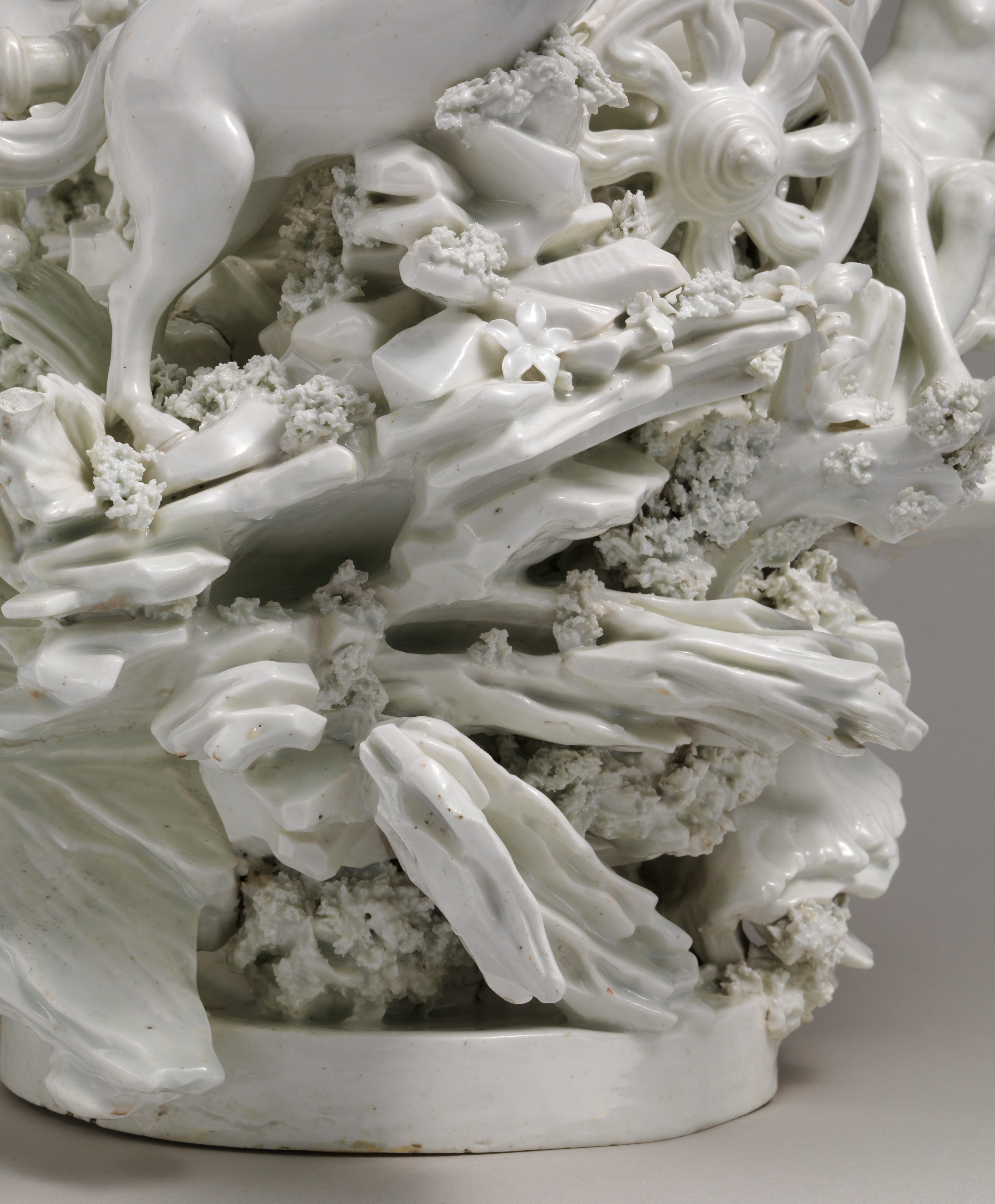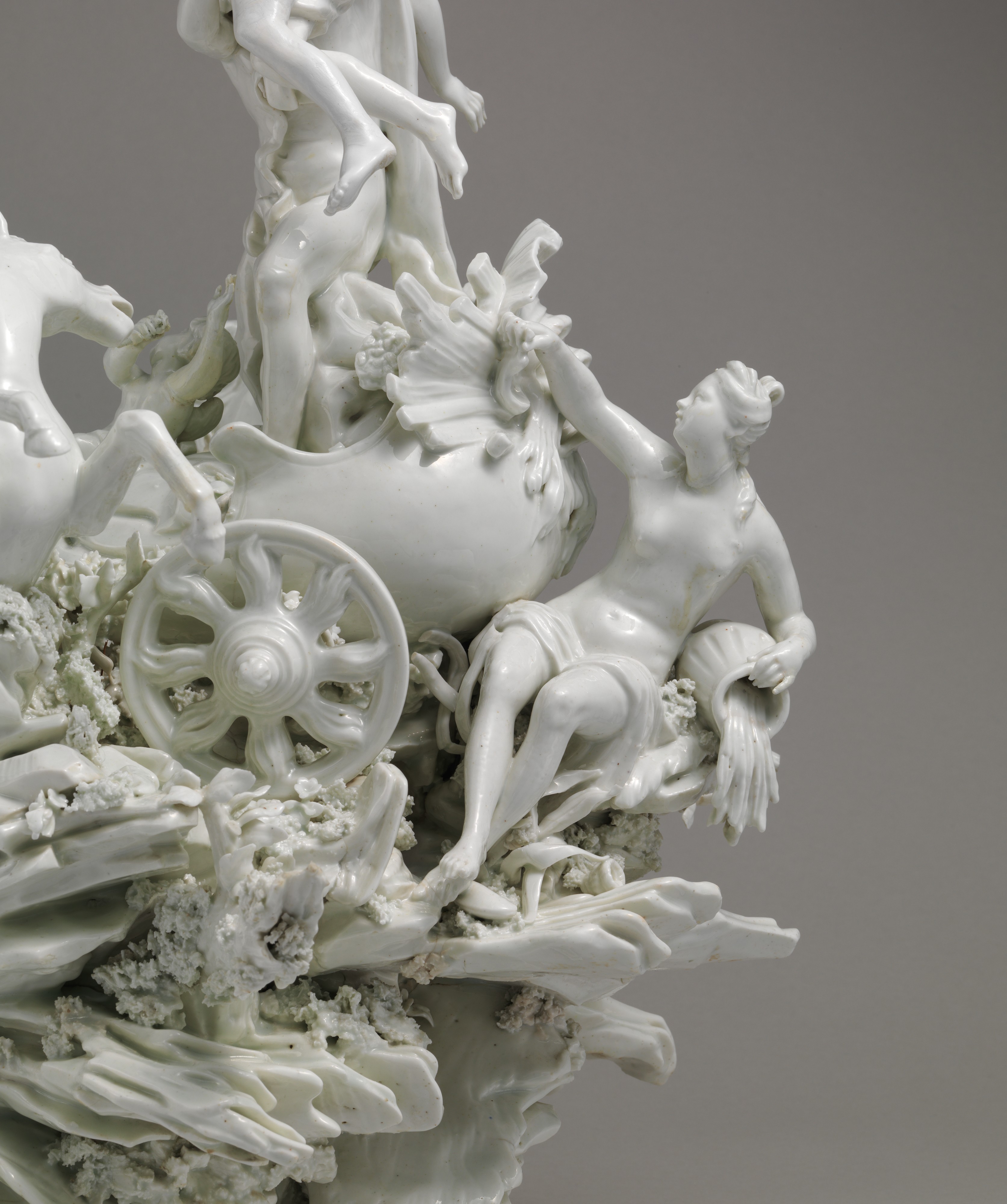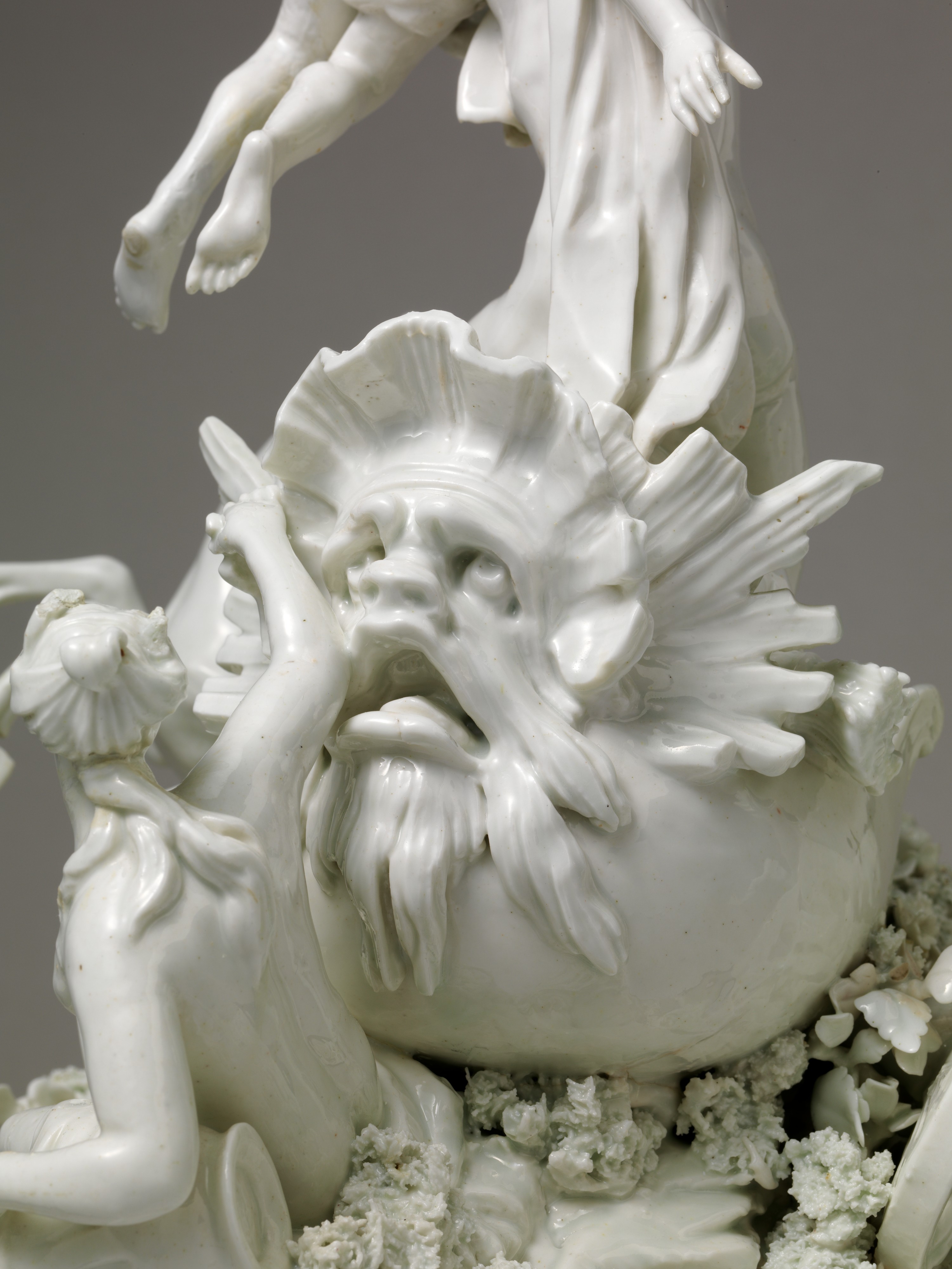Rape of Proserpine
possibly Orléans Manufactory French
Not on view
Of the French soft-paste porcelain factories producing on a significant scale in the eighteenth century, the Orléans factory, established in 1753, is the least known and the least understood. The factory was in existence for slightly less than thirty years, and its particular focus was on figures and groups. However, the factory’s sculptures and wares are often not easily recognized, in large part due to the scarcity of marked objects.[1] Many of the factory archives have been lost, and our knowledge of its history and production derives from several documents published before World War II, when much of the archival material was destroyed. Recent scholarship has greatly advanced our knowledge of the factory,[2] but Orléans remains less well known than France’s other soft- paste porcelain enterprises.
While the factory was founded in 1753, it is unclear when the production of porcelain actually began. The petition to establish the factory stated that its goal was to produce fine white earthenware, commonly known as creamware,[3] rather than porcelain, thus avoiding a violation of the monopoly on porcelain production that had been granted to the Vincennes factory. Nonetheless, it is also possible that the aim was, in fact, to produce both types of ceramic bodies without drawing attention to the quest for soft- paste porcelain. The factory employed twenty workers to produce flowers in 1756, and in view of the fact that no creamware flowers are known to exist, it seems almost certain that soft-paste porcelain was in production at least by that date.[4]
It is not known why the factory made sculptural work its priority, since the production of figures was customarily secondary to the production of tablewares and vases at other French soft-paste factories. An inventory of records from 1759 shows the impressive total of 547 figures and groups stored at the factory, with the number increasing to 1,000 in an inventory taken two years later.[5] There was a wide variety of subject matter for the modelers to depict, but most Orléans sculp-ture is modest in ambition, consisting of one or two figures and typically six to twelve inches in height. In contrast, the Rape of Proserpine, at a height of almost twenty inches, is one of the largest soft-paste porcelain groups produced in France during the eighteenth century, and it is the most artistically and technically challenging work by the Orléans factory known to have survived.
The group depicts an event from classical mythology as described in Metamorphoses (8 ce) by the Roman poet Ovid, in which Pluto, god of the underworld, abducts Proserpine. Pluto stands in a chariot with Proserpine carried over his left shoulder, and a figure of Cupid reclines at his feet. The water nymph Cyane, positioned behind the chariot, attempts to grasp it with her outstretched arm to prevent its descent to the underworld (detail, page 225). The group illustrates the moment in the story just before the chariot with Pluto and Proserpine plunges into the abyss; the horses have broken free from the chariot and leap away, and their orientation in the opposite direction from Pluto denies the group a dominant point of view. The explosive action embodied by the figures, chariot, and horses expands in all directions, and the sense of dynamism is reinforced by the extraordinary base of rockwork on which all the figures are supported. Large, irregular, and craggy expanses of rock extend out as if exploding from the center, and the randomly applied tufts of vegetation and flowers enhance the visual complexity of the landscape. Typical of most Orléans sculpture, the quality of the modeling does not match that found on contemporary Sèvres figures, and there is a slight awkwardness to the poses and an ungainliness in the proportions of the horses, in particular. Despite these minor deficiencies, few porcelain groups made during this period exhibit the bravura found in this composition, and the energetic rendering of the horses and the rocky terrain on which they leap have few parallels in porcelain sculpture.
The subject of the Rape of Proserpine was popular at Orléans, as indicated by the listing of five such groups in the factory inventory from 1759; the presence of another five in the 1761 inventory; and seventeen Proserpine groups included among the many Orléans porcelains sold at auction in Amsterdam in 1773.[6] It is likely these groups were considerably smaller in scale and less complex than the Museum’s example and consisted of only the figures of Pluto and Proserpine supported on a far simpler base.[7] The elaborately constructed base of the Museum’s group is highly unusual within Orléans figural work, not only for its scale but also because of the absence of prominent rococo scrolls that serve as a distinguishing feature on the bases of much of the factory’s sculpture. With so few marked works to serve as touchstones, the use of unusually tall bases composed of pronounced C-scrolls and pierced areas often point to an Orléans origin, as seen in the group personifying Europe and America.[8]
While the published factory documents reveal a consider-able amount of information about the production at Orléans, there has been relatively little linkage between known factory models and surviving examples. The Museum’s group was attributed to the Tournai factory in present-day Belgium as recently as 1990, and it was only through a rigorous stylistic analysis and simultaneous process of elimination that an Orléans origin was proposed and accepted in the relatively recent past. It is known that the factory produced extensive numbers of porcelain flowers; 24,000 examples were in the factory’s shop when Louis- Stanislas- Xavier (1755–1824), comte de Provence (also known after 1795 as Louis XVIII, king of France), visited in 1777,[9] yet surviving flowers have not been identified. Despite the factory’s impressive levels of production, it closed upon the death of its owner Claude- Charles Gérault d’Areaubert (1716/17–1782), and the extent of its impact on and contribution to French eighteenth-century soft-paste porcelain has yet to be fully appreciated.
Footnotes
(For key to shortened references see bibliography in Munger, European Porcelain in the Metropolitan Museum of Art. NY: The Metropolitan Museum of Art, 2018)
1 Only seven marked objects are known; see Froissart
2005, p. 48.
2 Ibid., pp. 47–93. See also Dawson 1994, pp. 243–45.
3 The request was to produce “fayance de terre blanch
purifiée”; Froissart 2005, p. 51.
4 Ibid., p. 54.
5 Ibid., p. 55.
6 Ibid., p. 62.
7 See Geneviève Le Duc in Musée National de
Céramique 1989, pp. 115–16, no. 151.
8 MMA 59.208.10.
9 Dawson 1994, p. 244.
This image cannot be enlarged, viewed at full screen, or downloaded.
This artwork is meant to be viewed from right to left. Scroll left to view more.






